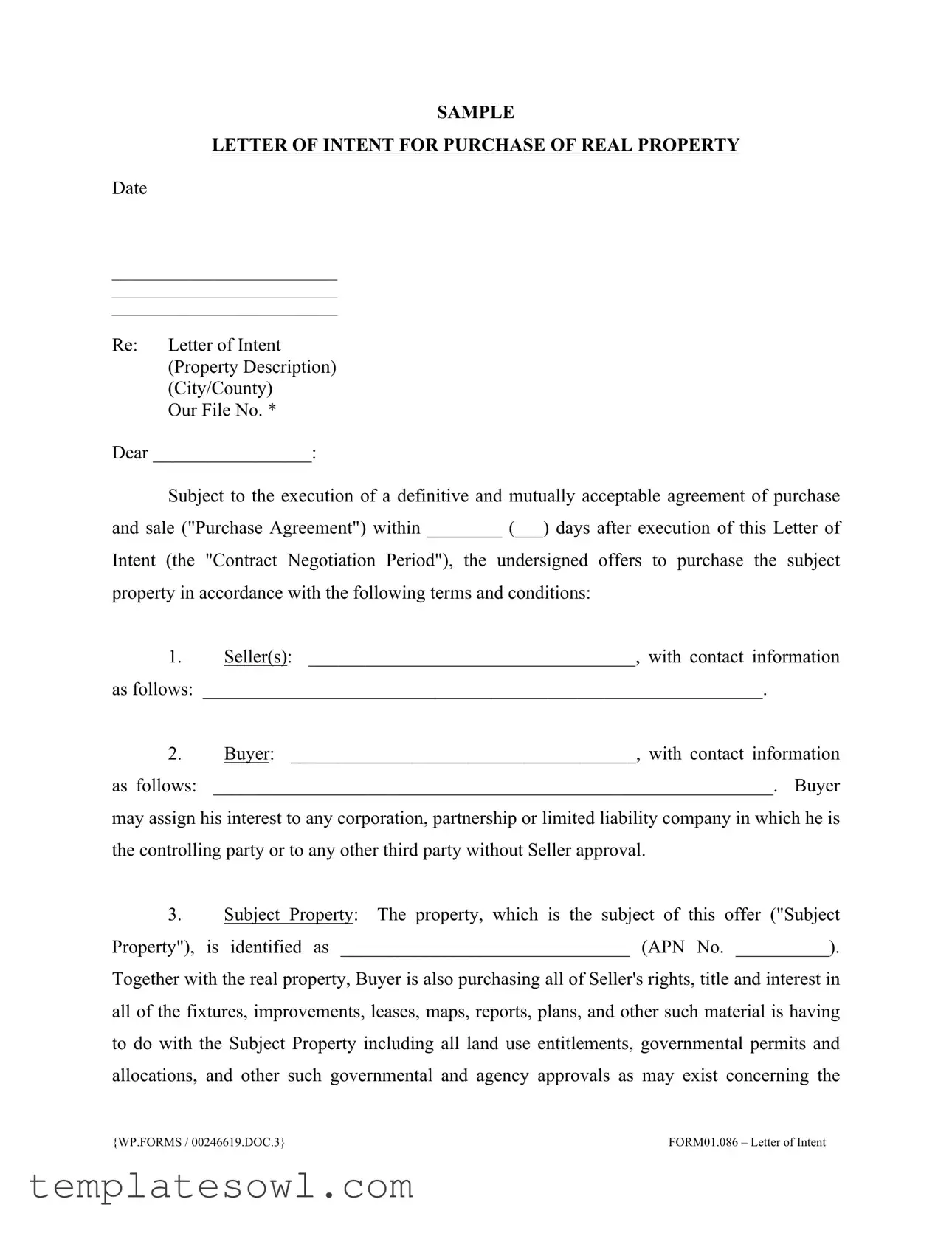What is the purpose of a Letter to Purchase Land?
The Letter to Purchase Land serves as a preliminary agreement between a buyer and a seller. It outlines the buyer’s intention to purchase a specific piece of property, detailing key terms such as the purchase price, deposit amounts, and timelines for negotiations. This letter acts as a framework for the eventual purchase agreement, allowing both parties to commence due diligence and negotiations with a clear understanding of the primary conditions.
How long is the Contract Negotiation Period?
The Contract Negotiation Period is the timeframe specified in the Letter during which the buyer and seller negotiate the definitive purchase agreement. The duration can vary based on agreements between the parties; however, it is essential to clearly indicate this timeline in the letter. Upon expiration, if no agreement has been executed, the Letter of Intent becomes void.
Can a buyer assign their interest in the property?
Yes, the buyer has the right to assign their interest in the property to another entity without needing the seller's approval. This could include partnerships or limited liability companies, provided the buyer maintains control over that entity. This provision allows for flexibility in the transaction, enabling buyers to adapt their purchasing strategies as necessary.
What is included in the Initial Deposit?
The Initial Deposit is the sum of money the buyer places in escrow concurrent with opening the escrow account. This deposit is refundable and contributes towards the overall purchase price of the property. It also serves to demonstrate the buyer's serious intent to proceed with the purchase.
What happens during the feasibility period?
The feasibility period grants the buyer time to conduct thorough due diligence on the property. During this period, the buyer can assess aspects such as zoning laws, environmental concerns, and development potential. If any issues arise, the buyer retains the right to terminate the letter of intent and reclaim their initial deposit without penalty, simplifying the decision-making process.
Are there any contingencies for closing the escrow?
Yes, closing the escrow is subject to certain conditions, including the ability of the title company to issue a suitable title insurance policy, the absence of development restrictions on the property, and the seller's provision of a clear title, free of liens. These contingencies protect the buyer’s interests and help ensure a smooth transaction.
How long is the offer valid?
The offer outlined in the Letter becomes an open offer until the specified expiration date noted within the letter. If the seller has not executed the letter by that date, the offer automatically terminates, allowing the seller to seek other buyers. This clause ensures that both parties remain committed to the timeline established during negotiations.
What should happen if the transaction is canceled?
In the event that the transaction is canceled, all documentation provided by the seller to the buyer is to be returned. This ensures that both parties handle sensitive information appropriately and signifies the end of the engagement regarding the specific property at hand.
What are the potential other provisions in the Purchase Agreement?
The Purchase Agreement may contain additional provisions beyond those discussed in the Letter to Purchase Land. These could include clauses related to liquidated damages, attorney's fees, mutual indemnification, and documentation processes. It’s crucial for both parties to carefully review these provisions to understand their obligations and rights fully.
Why is this letter not considered a binding agreement?
The Letter of Intent is only binding during the specified Contract Negotiation Period. If a formal Purchase Agreement is not executed within that timeframe, the Letter automatically becomes void. This structure provides both parties with the freedom to explore and negotiate without the pressure of a legally binding contract until a definitive agreement is reached.
